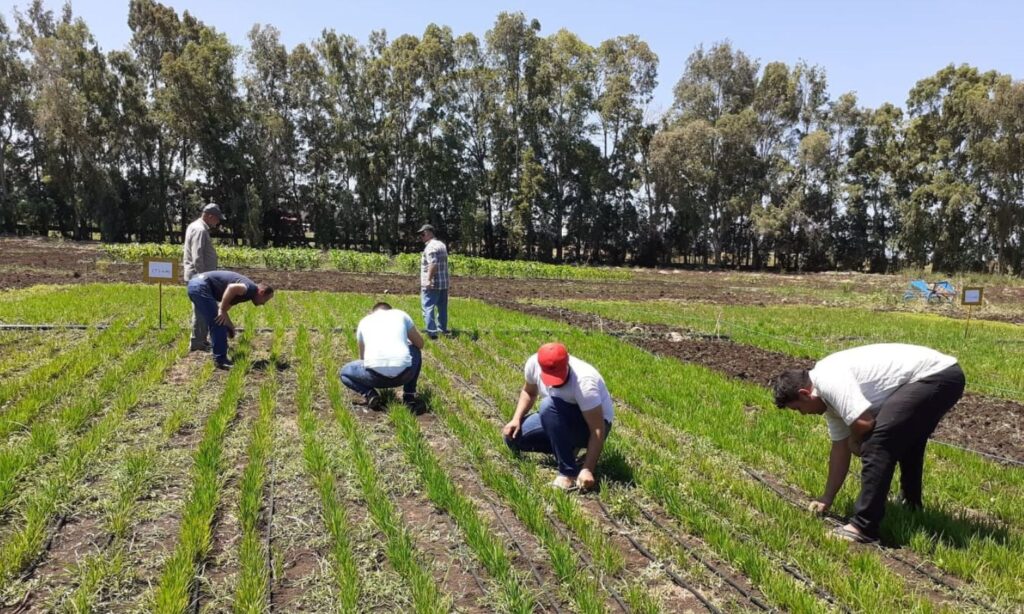Farmers in the countryside of Homs are awaiting the rainfall to start preparing for the winter planting season, but the weather conditions are not encouraging, especially with the delay in rainfall so far.
The delay in rain has generated concerns among farmers as they anticipate a decline in the winter agricultural season, depriving them of compensating for losses from last year. This means additional costs for farmers in terms of irrigation, and it will also affect the quantity of production.
Farming concerns
Hassan, a farmer from the countryside of Homs, told Enab Baladi that he would not be able to plant lentils and barley on his land before substantial rainfall is received.
The same situation applies to Mohammed and his brother, whose land is planted with olives. They currently need good rainfall before beginning to harvest their crop (as they expect an increase in olive production after the rains), according to him.
As for Abu Ayman, who is also a farmer from the countryside of Homs, he intends to plant his land with wheat this year and needs abundant rainfall to moisten the soil before planting.
Abu Ayman mentioned to Enab Baladi that if the rain is delayed until mid-November, he will irrigate his land using well water, which requires additional effort and costs. The diesel pump used to extract and pump water from the well consumes about two liters of fuel per hour, with the price per liter at 16,000 Syrian pounds, but it can reach 20,000 pounds on the black market due to Israeli military escalation in Lebanon.
Abu Ayman needs about ten hours to irrigate four dunams, consuming 20 liters of diesel, costing 320,000 pounds (21 USD). He may need to irrigate his land seven to nine times during the year to achieve a good yield, thus the expected agricultural resources will decrease due to the added costs.
Agricultural engineer Mustafa (from the countryside of Homs) said to Enab Baladi that economic crops like onions, garlic, and even wheat and anise deserve farmers to irrigate until the rains arrive, as these crops provide a good return that can cover irrigation costs.
Farmers can irrigate these crops regularly every week or every 15 days, depending on the type of crop planted, and thereafter the rain may come even if it is delayed.
Regarding the impact of delayed rainfall on groundwater, Mustafa explained that wells in Homs are typically shallow, with groundwater located at depths exceeding 200 or 300 meters. However, in Homs, the depth of wells ranges between 50 and 100 meters, so it is possible for surface water to be affected and will be compensated when irrigation water is pumped from the Qatina Lake, which typically starts in early March and irrigates all fields in Homs and Hama.
Last season’s losses
Despite good rainfall last season, the production was relatively weak, and farmers encountered losses due to several factors, including weather conditions accompanying the rains, such as fog and sudden temperature rises, which led to many diseases in the crops, including blight and fungi, alongside flower drop.
Even with reduced production, prices in the markets were low due to decreased demand from external markets, especially for some crops like coriander and anise.
Hassan (a farmer in the countryside of Homs) suffered a loss of about 100 million Syrian pounds (6,780 USD) last winter due to damage to his crop over an area of 150 dunams of cumin and lentils, as a result of sudden temperature rises following heavy rains.
Mohammed and his brother faced losses of around 90 million pounds (6,100 USD) from cultivating about 100 dunams of cumin, lentils, and barley for the same reasons, as the production of one dunam of cumin did not exceed three kilograms, whereas the expected yield was at least 30 kilograms, according to Mohammed’s statement to Enab Baladi.
Abu Suleiman (56 years old), an agricultural produce trader, told Enab Baladi that trading in agricultural products was weak last year due to low quality and quantities, accompanied by a drop in prices.
Overlap between seasons
According to local radio “Sham FM” reporting from the Deputy Head of the Syrian Astronomical Association (SAA), Abdul Aziz Sanobar, on October 15, the winter season has entered Syria astronomically, yet there is an overlap between the seasons, meaning summer within winter or fall due to global warming, and there is also the loss of parts of spring and fall.
This change has led to climate variation in certain areas, causing dry regions to become rainy and vice versa, which has contributed to the difficulty of accurately predicting weather conditions.
The Syrian Meteorological Authority reported a significant loss experienced in Syria between October 7 and 14, after a cold air mass reached Cyprus and remained in northeastern Turkey.
If the air mass reaches Cyprus and moves east, Syria would have experienced a “remarkable rainy activity” due to the warm sea waters and the cold origins of the air mass along with high humidity, which causes significant thermal differences in all atmospheric layers, a condition favorable for abundant rainfall and its wide coverage.
Indicators of climate change
According to the World Meteorological Organization’s report on the state of the global climate, 2023 is recorded as the hottest year since records began with a clear margin.
The record-breaking ocean temperatures, rising sea levels, loss of sea ice in the Antarctic region, and the shrinking of glacier areas were all shattered in 2023.
This has led to extreme weather phenomena that undermine social and economic development. However, “the shift to renewable energy offers hope in terms of reducing emissions from fossil fuels and conventional industries, and the cost of inaction on climate remains higher than the cost of climate action,” according to the report.
The World Health Organization predicts that climate change could cause the deaths of 250,000 people annually between 2030 and 2050.

